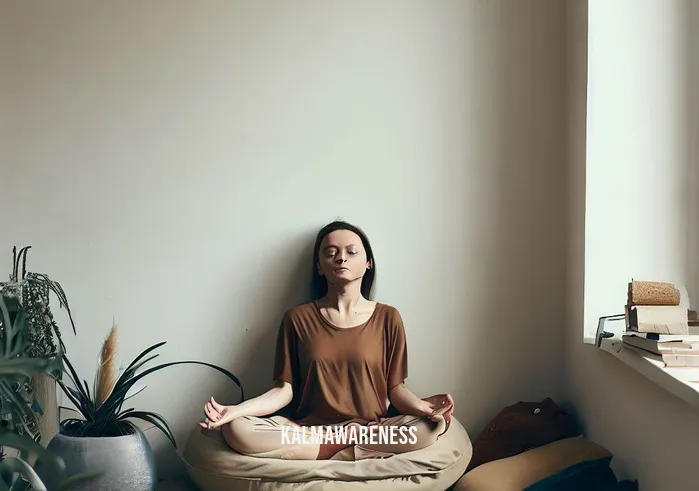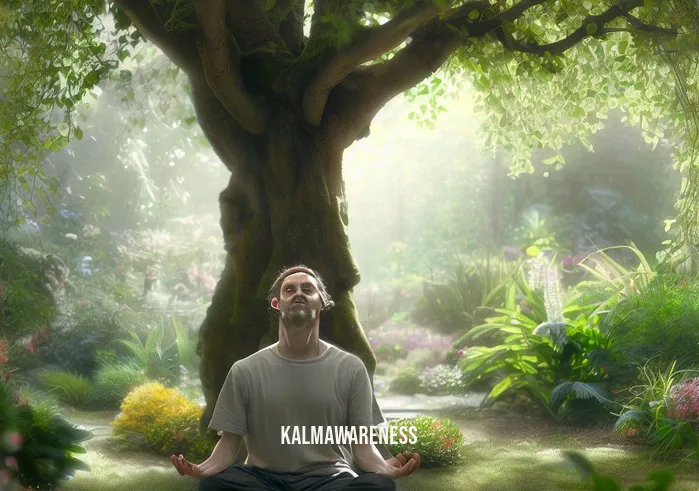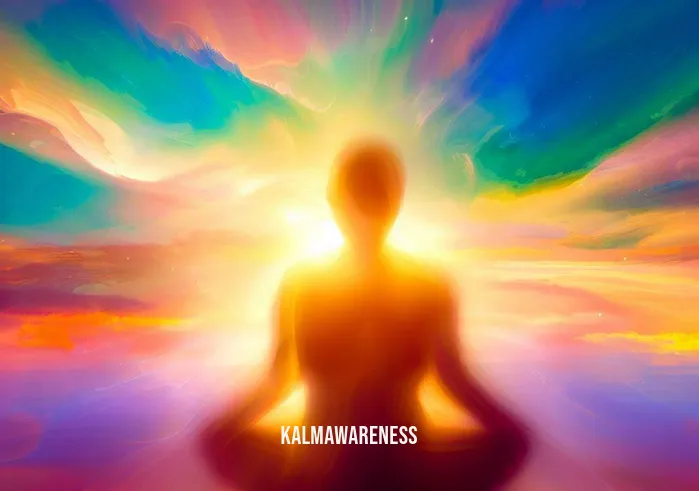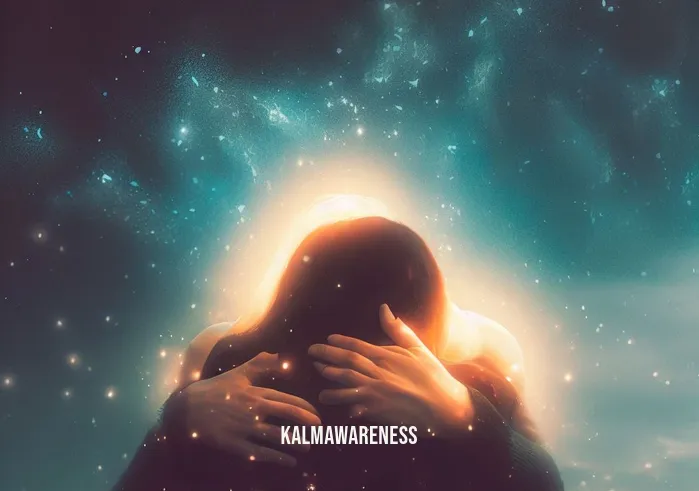The Evolution and Significance of Meditation Figures: A Journey from Ancient Wisdom to Modern Practices
The Multifaceted World of Meditation Figures
As spiritual disciplines go, meditation stands out as a practice that has found a home in virtually every culture, religion, and philosophical system. The concept of meditation figures—the symbolic representations, teachers, or archetypes one focuses on during meditation—varies as widely as the cultures from which they originate. These meditation figures serve as focal points, aiding in concentration and providing deeper insights into oneself or the universe.
The Buddhist Legacy
In Buddhism, figures like the Buddha, Bodhisattvas, and various deities are commonly invoked during meditation. These figures are not only revered but are also considered to be concentrations of particular energies or virtues. By meditating upon them, practitioners aim to internalize these virtues, gradually transforming their own mind and behavior. This is not to say that Buddhism holds a monopoly on the concept of meditation figures; far from it. Ancient African meditation techniques, for instance, also have their own set of spiritual figures and symbols which serve similar purposes.
Mindfulness in the Modern Age
Fast forward to the present, and meditation figures have found a new home in mindfulness practices. Unlike traditional forms, where the figures often hold religious or mythological significance, modern mindfulness tends to focus more on the here and now. This approach emphasizes direct experience and the observation of one’s thoughts, feelings, and sensations in a non-judgmental way. Courses such as the Penn Mindfulness Class make no mention of religious figures, focusing instead on the practical application of mindfulness techniques. Yet, this too is a form of meditation figure: the cultivation of a “mindful self” that serves as a role model and guide.
The Role of Habitual Thinking
Our brains are wired to wander, to think habitually, and to form patterns. According to cognitive psychology, our thoughts tend to follow well-worn paths, making it challenging to experience the present moment fully. This is what habitual thinking is all about. When one uses meditation figures as a focal point—be it Buddha, a symbol, or the concept of a mindful self—they are essentially rewiring their habitual thinking. The figure becomes a mnemonic device that helps to redirect the mind, facilitating a deeper level of concentration and presence.
Combining Physical and Mental Training
Interestingly, the realm of physical fitness has also borrowed from the concept of meditation figures. Mindful muscle training is one such approach that integrates mindfulness into physical exercise. This mirrors practices like Tai Chi and Yoga, where physical postures and movements are synchronized with meditative focus, creating a holistic wellness routine. Even mindful martial arts adopts similar principles, using the body as a “figure” to focus upon during meditation in motion.
A Holistic Approach
Incorporating meditation figures into one’s practice provides a rich, multilayered experience that taps into the psychological, spiritual, and physical aspects of being. Whether it’s through traditional meditation focusing on ancient figures, the modern concept of the “mindful self,” or even the body itself, these figures help facilitate a deeper experience of presence and mindfulness.
“Life is available only in the present moment.”
— Thich Nhat Hanh, source
In the end, the ultimate aim is to make mindfulness a lived experience, permeating every facet of our existence. With its myriad forms and interpretations, the world of meditation figures offers a wealth of options for those willing to explore.
Would you like to dive deeper into how different cultures and modern adaptations contribute to this rich tapestry of meditative practices? Continue reading to find out.

The Multifaceted Roles of Meditation Figures: Unveiling Symbology, Personalization, and Integration
The Symbology Behind Meditation Icons
While we’ve touched upon the general importance of meditation figures, it’s critical to delve into the specific symbolism these archetypes or icons can represent. Whether they’re rooted in spiritual traditions or modern mindfulness methods, understanding this symbology can significantly enrich one’s meditation experience. For instance, various meditation figures in mindful skills training can help one focus on specific competencies like emotional regulation or stress reduction.
Unpacking the Layers of Symbology
- Spiritual Figures: Traditionally, these figures might represent a certain type of energy or divine quality.
- Natural Elements: In some practices, figures might not be beings but elements like water or fire, symbolizing fluidity or transformation.
- Personal Heroes: In contemporary meditation, your role models can serve as meditation figures to inspire change.
Personalizing Your Meditation Journey
In the modern age of mindfulness, the trend is moving towards personalization. Different people have different needs, and hence, their meditation figures might differ dramatically. For instance, those struggling with menopause might find solace in targeted practices like meditation for menopause.
Customizing Your Archetypes
- Goal-Oriented: Tailoring your figures based on what you aim to achieve, like peace or focus.
- Emotion-Based: Selecting figures that help you grapple with specific emotions like anger or sadness.
- Cultural Resonance: Choosing figures that resonate with your cultural background or beliefs.
Integrating Meditation Figures into Daily Activities
Once personalized, these meditation figures can be incorporated into routine activities. Concepts like meditation in motion or mindful hiking seamlessly blend meditative focus into physical exercise, making meditation a more integrated part of your daily life.
Categories of Daily Activities and Corresponding Meditation Figures
| Activity | Suggested Meditation Figure | Benefits |
|---|---|---|
| Physical Exercise | Mindful Self | Enhanced focus |
| Work | A calming deity | Reduced stress |
| Family Interaction | Compassionate Bodhisattva | Improved relationships |
| Leisure Time | Personal Hero | Inspiration and motivation |
| Sleep | Calm natural element | Better rest |
Mindfulness for Different Age Groups
It’s never too early or too late to start meditating. Schools are introducing meditation stories for students, and there are even mindfulness books for teens to instill these practices from a young age. Similarly, older adults can use meditation figures for reflection and life review.
Closing Remarks
Meditation figures are not just placeholders for your attention; they are a gateway to a richer, more personalized meditation experience. They serve as powerful tools for spiritual growth, emotional regulation, and even daily task management. As we have seen, they are adaptable across different age groups and can be customized to align with your personal goals or challenges.
Would you like to know how meditation figures have been adapted for corporate settings, with real-world case studies demonstrating their efficacy in stress management and team building? Continue reading to find out more.

Finding Hope and Inspiration Through Meditation Figures
The Therapeutic Power of Meditation Figures
We’ve seen how meditation figures can be vital focal points, allowing for deeper concentration and greater personalization. Beyond these practical applications, meditation figures hold immense power in inspiring hope and offering emotional solace. For example, the practice of mindfulness rooted in the Spanish-speaking world, often termed mindful en español, incorporates traditional and culturally relevant figures to help practitioners connect more deeply with their inner selves.
Invoking Hope Through Meditation
“Hope is the thing with feathers that perches in the soul.”
— Emily Dickinson
In a world where pessimism often takes center stage, the thoughtful selection of meditation figures can act as a beacon of hope. These archetypes or symbols serve as tangible touchstones of optimism, offering you a chance to imagine, reflect, and aspire.
The Inspirational Dimensions of Mindful Activities
Many activities, including gratitude yoga in Princeton, employ meditation figures to add an extra layer of inspiration. These figures, whether they’re spiritual icons or manifestations of virtues like gratitude, help you connect with something greater than yourself.
Affirmative Quotes for a Positive Outlook
“Where hope grows, miracles blossom.”
— Elna Rae
“Everything that is done in the world is done by hope.”
— Martin Luther
These quotes resonate with the idea that focusing on uplifting meditation figures can substantially enrich your practice, not only making it a habit but also a source of continued inspiration.
Corporate Applications: Renewing the Mind and Spirit
Workplaces too are recognizing the potential of integrating mindfulness for employee well-being. Some even offer access to a renewed mind employee portal, where the use of meditation figures can help inspire a more balanced and harmonious work environment.
Corporate Inspirations
“Success is not the key to happiness. Happiness is the key to success.”
— Albert Schweitzer
Incorporating meditation figures that symbolize aspects like success, balance, or teamwork can make a substantial difference in the workplace. They act as unifying symbols, helping teams work better and individuals find their footing in often stressful environments.
The Future of Meditation Figures in Technology
While ancient practices have their unique appeal, modern technology is not far behind in leveraging the benefits of meditation figures. Be it apps or online courses like Micromeditating, the figures are designed in such a way to cater to contemporary needs while preserving the essence of this ancient practice.
Adapting to the Digital Age
“You are never too old to set another goal or to dream a new dream.”
— C.S. Lewis
As we become increasingly reliant on technology, the role of meditation figures in digital formats becomes crucial in sustaining the practice’s inherent wisdom and benefits.
Conclusion: A Source of Everlasting Hope and Inspiration
Whether it is through traditional practices, modern adaptations, or even corporate mindfulness programs, meditation figures have proven to be more than just a point of focus. They are the lifeblood of a practice that aims not just at awareness but also at betterment, inspiration, and hope. As different as these figures may be across various traditions and methods, their ultimate goal is universally human: to inspire hope and provide a sense of direction.
Are you intrigued by how these figures can impact societal structures, including education and healthcare? Continue reading to explore the far-reaching influence of meditation figures.

Understanding the Nuances of Meditation Figures
Meditation Figures in Literature and Education
Before diving into the intricacies of meditation figures, let’s acknowledge their representation in literature and educational material designed for young minds. Meditation stories for students often employ simplified figures to aid in understanding complex principles. Similarly, mindfulness books for teens use relatable figures to communicate the essence of mindfulness. Now, let’s proceed to unravel the deeper layers of meditation figures.
The Evolution of Meditation Figures Over Time
- Ancient Practices: From Buddha statues to Mandalas, the history is rich with diverse figures.
- Modern Adaptations: Spiritual avatars in virtual reality, mobile app icons.
- Educational Tools: Figures like the “Mindful Mo” are used in children’s mindfulness programs.
The Cultural Importance of Meditation Figures
- Eastern Philosophies: Statues of Hindu deities and Tibetan thangkas.
- Western Adaptations: Angels, and even secular figures like the “Mindful Stone.”
- Global Fusion: A blend of various elements, often seen in mindful hiking expeditions where nature itself becomes a figure for meditation.
The Utility of Meditation Figures in Specialized Fields
Meditation figures are not limited to just traditional or general mindfulness practices; they also find a place in highly specialized areas. For instance, meditation for menopause often uses female-centric figures to signify empowerment and fertility.
Figures in Different Physical Disciplines
- Yoga and Fitness: Figures representing balance and strength.
- Mindful Martial Arts: Warriors and spiritual animals as focus points.
- Outdoor Activities: Elements of nature like trees and mountains.
Figures in Psychological Contexts
- Therapy: Therapeutic figures like the “Safe Space” visualization.
- Motivational: The “Future Self” in envisioning exercises.
- Mindful Skills: Use of tailored figures to teach specific mindfulness skills, such as emotional regulation.
Meditation Figures as Professional Tools
Meditation figures are also being adopted as potent tools in professional scenarios, such as in the role of a meditation consultant. Here they serve to facilitate focus and stress management among employees.
Figures in Professional Contexts
- Corporate Mindfulness: Symbols representing team unity and corporate vision.
- Academic Settings: Figures that aid in concentration and memory.
- Healthcare: Healing and nurturing figures used in meditation for patients.
Multilingual Adaptation of Meditation Figures
Meditation is a global phenomenon, and so is the use of figures. They can be found in diverse practices such as French mindfulness, often called Méditation Pleine Conscience.
International Variations
- Asian Traditions: Mandala, Zen gardens, Taoist figures.
- European Practices: Celtic spirals, Greek mythological figures.
- African Interpretations: Indigenous symbols and totems, seen even in ancient African meditation techniques.
Concluding Thoughts: Preparing for the Final Chapter
Meditation figures offer an exciting and complex blend of cultural, psychological, and functional applications. This exploration hopefully serves as a comprehensive guide to understanding their various facets. As we near the end of this journey, prepare for the final chapter where we discuss the future trends and untapped potential of meditation figures. The exciting finale promises to tie all these threads together into a cohesive understanding of this multifaceted subject. So stay tuned!

Reflecting on the Multifaceted World of Meditation Figures
A Colorful Tapestry
Ah, what a journey this has been! From ancient philosophies to modern applications, we’ve seen how meditation figures serve as guiding lights, teaching tools, and sources of inspiration. Whether you’re a seasoned practitioner or someone who’s just stumbled upon the concept through a mindfulness class, these figures offer a multifaceted approach to self-awareness and spiritual growth.
Savoring the Present Moment
Let’s pause and be mindful. Life, as they say, is available only in the present moment. This is perhaps one of the most vital teachings that many meditation figures embody. Figures are not just static sculptures or images; they serve as poignant reminders that life is available only in the present moment.
A Gallery of Mindful Marvels
Wouldn’t it be wonderful if your personal meditation journey were sprinkled with some ‘miracles?’ Figurative representations often act as these tiny marvels. Mindful miracles, so to speak, guide us to find meaning and beauty in the ordinary.
Expressing Gratitude and Encouragement
As we tie up our exploration, it’s time to express gratitude for the path we’ve journeyed together. Just like in a gratitude yoga class, let’s acknowledge the collective wisdom that has brought us here. And why stop now? Go on, delve deeper into mindfulness practices or maybe even try your hand at micromeditating.
An Ode to Mindfulness: A Collective Experience
The art of mindfulness is not just a solitary experience. It’s a collective journey. So why not share this joy? Whether you are an individual looking to expand your understanding or a manager considering a renewed mind employee portal, these figures hold something for everyone.
A Global Phenomenon
Before we wrap up, let’s acknowledge the universal allure of meditation figures. Whether you are exploring mindfulness in Spanish or intrigued by the concept of meditation in motion, these figures have transcended linguistic and cultural barriers to deliver a message that resonates with all of us.
Your Next Steps: A Call to Action
Now that we’ve shared this journey, it’s your turn to dig deeper. Haven’t checked out the segment on the importance of habitual thinking? Perhaps you can dive back in to connect more dots. Interested in incorporating mindfulness in your daily routine? Check out ways to strengthen your mindful muscle.
A Parting Note: Thank You!
As we conclude this chapter of our exploration, a heartfelt thank you is in order. Thank you for letting us be a part of your journey through the fascinating world of meditation figures. Rest assured, there is more to come. Future editions will continue to offer equally, if not more, engaging and insightful content.
So, until then, keep exploring, keep questioning, and most importantly, keep being mindful.




